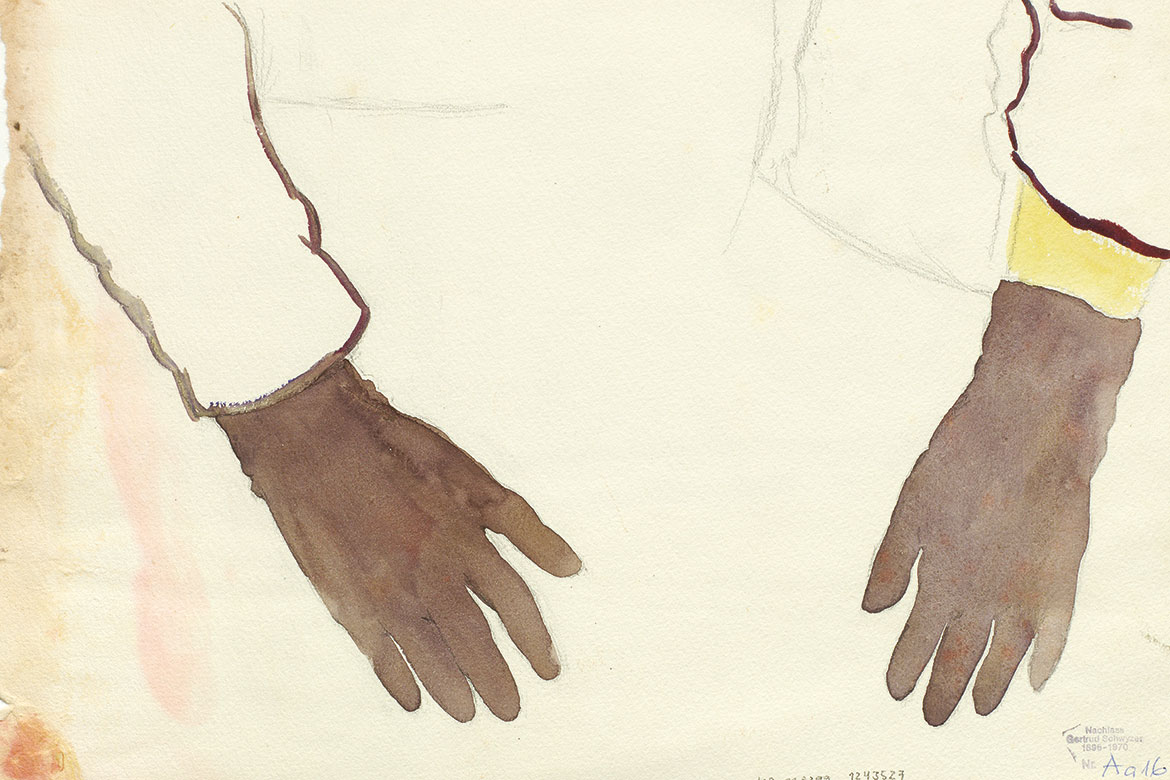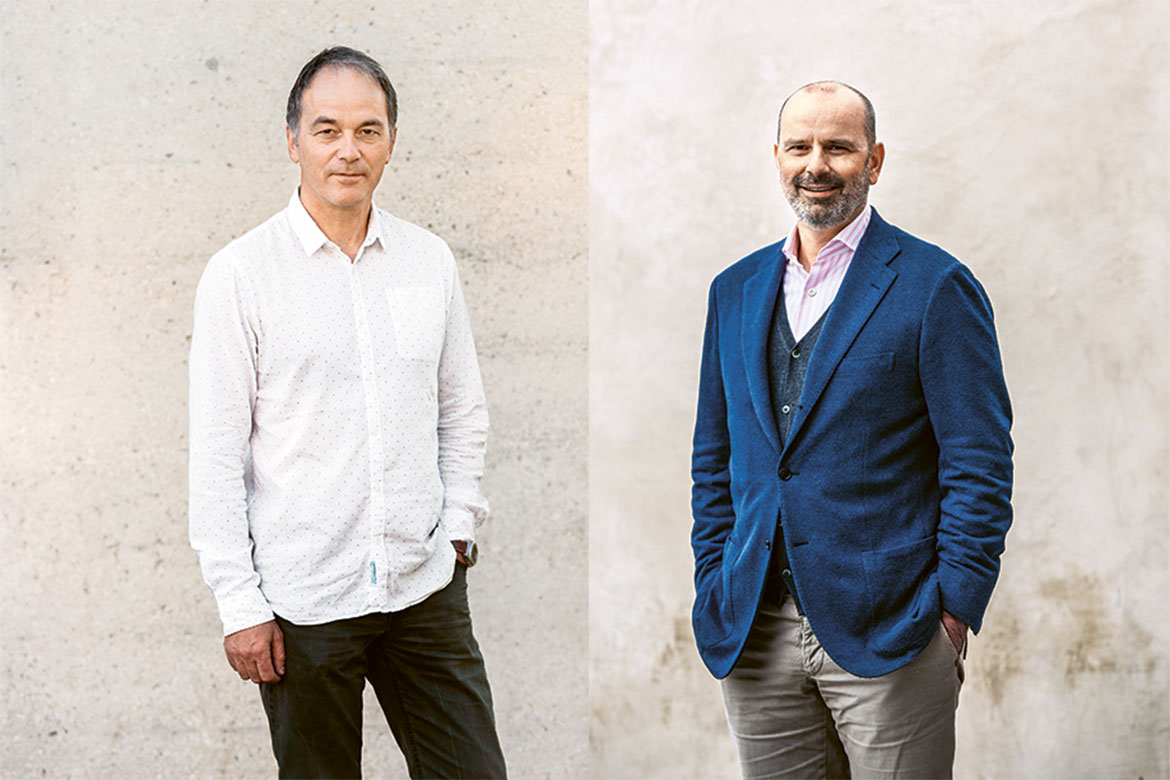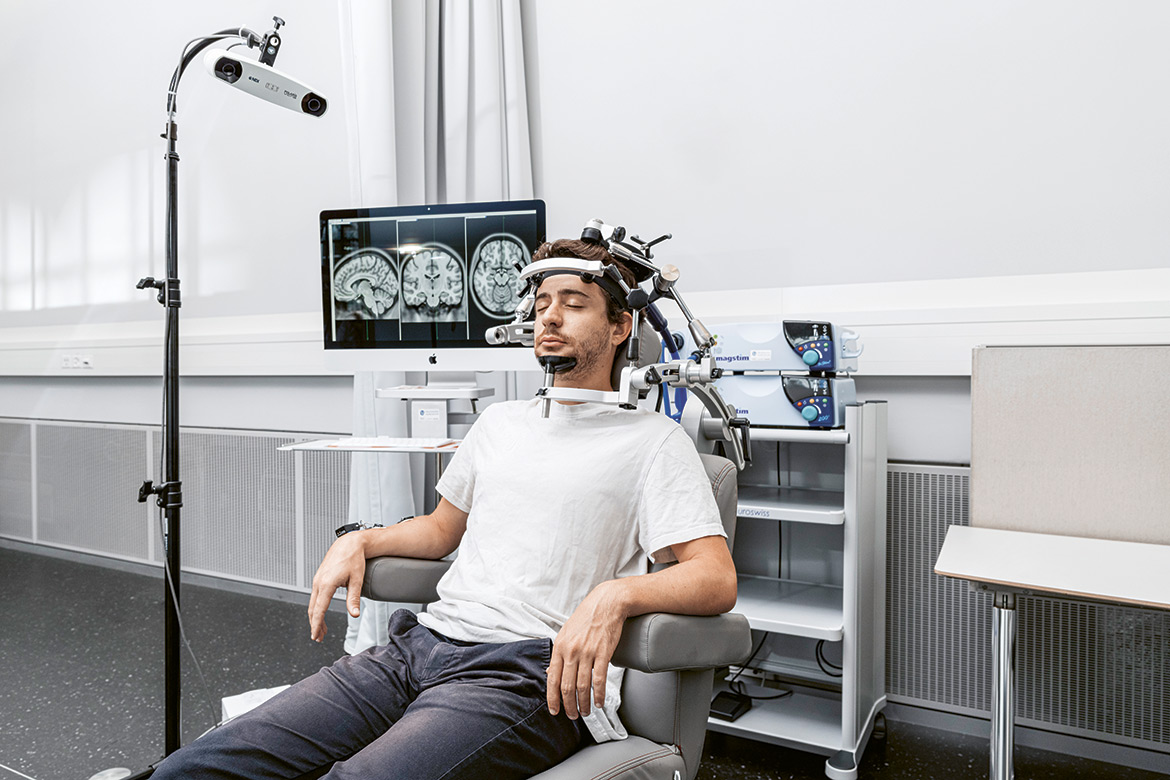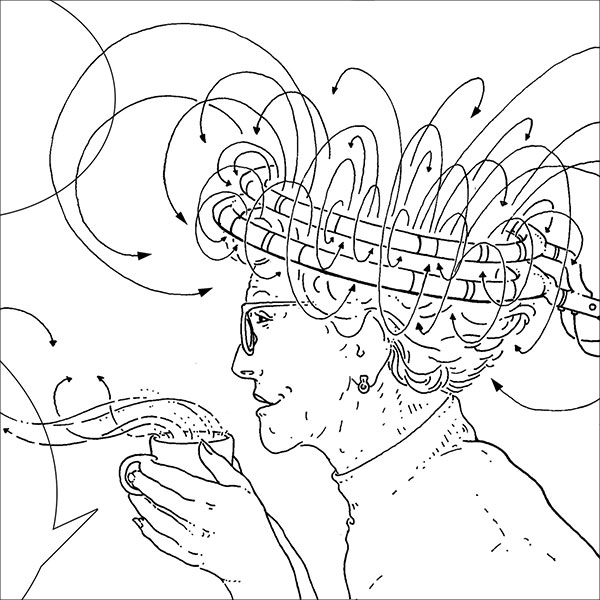Art in the psychiatric clinic
But is it art? Works by psychiatric patients have long been a topic of discussion among psychiatrists. But an exhibition is now making it possible for the public to enter into the debate.

Picture: Gertrud Schwyzer (1886–1970), untitled, sleeves and black gloves, watercolour, pencil on card, 21×31 cm, undated, Herisau Collection, no inventory number © Kantonsbibliothek Appenzell AR, KB-018299/S 1.
If Meret Oppenheim (1913–1985) had painted this picture of black gloves, everyone would agree that it’s art. But it was actually painted in the Krombach Sanatorium in Herisau, one of 26 cantonal psychiatric clinics built in Switzerland in the 19th and early 20th centuries. The painter, Gertrud Schwyzer, had trained as an artist, but was interned in the clinic until her death in 1970. During that time, she created over 4,000 works that remained unseen outside the walls of her institution.
The fate of her paintings was typical of the works of innumerable patients like her. “Between 1870 and 1930, artistic activity had a certain status in Switzerland’s psychiatric institutions”, says Katrin Luchsinger, an art historian at the Zurich University of the Arts. It was the psychiatrists who decided on the quality of the drawings and sculptures that were made in their care. “But they weren’t necessarily competent to make such decisions”, says Luchsinger. Later, these works were sometimes sold off at clinic bazaars, or ended up in attics or in the trash. “These complex works reflect the decision to lock up so-called ‘mad people’ in clinics, and thus exclude them from any public discourse”.
The exhibition ‘Extraordinary! Unknown Works from Swiss Psychiatric Institutions around 1900’ is making 180 works by 54 psychiatric patients accessible to the public for the first-ever time. They were made at ten different clinics. It is the result of two SNSF projects. Researchers sifted through 20 percent of the files at 22 of the 26 cantonal clinics in Switzerland – a total of 19,270 files. They then created an image database that can be seen online at the Swiss Institute for Art Research.
“We would like to let these artists speak to us, and we hope that a debate will ensue”, says Luchsinger. In other words: this debate is not about what is art, but incites us instead to question our traditional, museum-based notions of it.
The exhibition is running in Heidelberg from 11 October 2018 to 20 January 2019.




